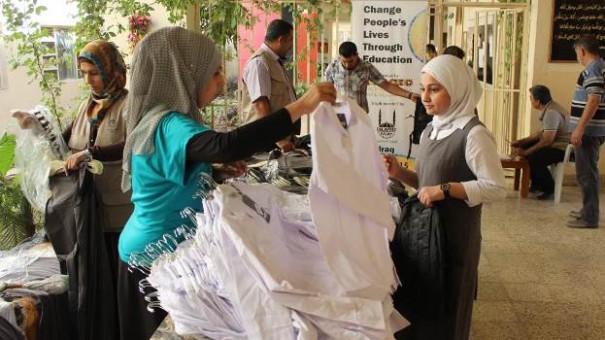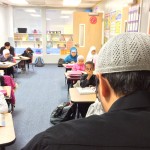All praises are due to Allah, Who taught man that which he knew not, and Allah’s blessing and peace be on our master Muhammadr, the prime educator as well as on his family and companions.
Knowledge, doubtless, is the most important yardstick to measure the difference between men and men whatever their caste, creed or colour. This is so because everybody now realizes the value of knowledge in the life of individuals and groups. It is, in fact, through knowledge that the nations progress and societies advance. Thus, there is no society around that does not spare any effort or leave any stone unturned in spreading knowledge among its members and getting rid of illiteracy. A nation’s advancement and progress and its high position in the comity of nations depends on how far ahead its people have moved in areas of science and information. A question arises here: How can people achieve this progress and how can nations realize this goal of advancement? There can be no doubt that the most important dispensers of knowledge are educational institutions of various categories and types. The most important of such institutions are the schools, institutes and universities as well as other specialized educational units and agencies.
Saeed Bin Ahmed Al Lootah
Chairman, Managing Committee
Educational institutions are now widespread in different parts of the world. Each of them has its own method to translate its educational policy into action and realize its educational goals. In spite of the multiplicity of methods and their growth from time to time the educationists have been complaining about the fall in the students’ standards, of weakness in their achievement, and of their inability to successfully meet the challenges of life after completing their education. This is mainly because they graduate, under an educational system where the emphasis is on quantity, not quality. Its main focus is on how much a student has studied without looking at the time spent on learning and without giving consideration to the state of environment and the society and to the differences in beliefs and customs. The voices of protest, however, get silenced with quick but partial solutions and the people are deceived by such slogans as improvement in syllabus or modification in the methods of teaching, or changing the courses or through pleasing languages that only serve to reduce the pain without eliminating the disease.
It is, therefore, imperative to bring about comprehensive change or thinking anew as a result of thorough analysis of these methods to determine how far these methods can achieve these objectives. There is no difference of opinion in that all these various methods agree on one objective, namely that education should enable the learner to meet the challenges of life with ability and success in the shortest possible time and with the minimum possible effort. The question therefore is: Are these educational methods capable of achieving the desired objectives?
The obvious answer is no. The first thing that makes them inefficient is the inordinate length of time spent on education. All existing educational programs require a student to spend the best time of his life, the period of strength and youth, in school. He remains sitting on the chair till he reaches the age of 25 or so. He graduates at a time when the long educational years and the huge burden of studies have totally exhausted him and he has already missed the bus of life. Is it what our society expects from its children?
Children are like a trust in the hands of their parents, and the teachers have accepted this trust from them. So, how can they just stand and watch while long years of their children’s life are being consumed in this way. They spend these long years in education as burdens on their parents and live as a community of consumers rather than earners or those that participate in the responsibilities of their lives. It is, therefore, imperative that we think of an educational method that would save these years for the children and enable them to shoulder their responsibilities at an early age so that they become productive and useful workers at the right age. But the question is how to determine the cut-off stage when a person leaves childhood behind and become a responsible individual.
A careful look at the nature of a person’s growth enables us to know the difference between the two stages, namely the stage of childhood and juvenility, and the stage of virility and maturity. What distinguishes the two is a marked physiological change in the life of man. This is the stage of sexual maturity which is a veritable watershed between the two stages. A young man attains to the age of puberty at fifteen. At this age, to all intent and purpose, he becomes a man capable of performing the responsibilities of life. It is in view of this that we are inviting our educationists to academically and practically prepare our children for this age so that the physical development synchronizes with the intellectual and practical maturity, and the young man starts participating in the building of the society with dynamism and vitality at the right time. A youth having attained to this age must be able to live an independent life and have the ability to produce and work. It is, therefore, necessary that we all think to devise a new educational system that is in harmony with human nature and leads towards the realization of the educational objectives with minimum effort and within as short a period as possible. This primary objective of the educational system is reflected in our motto that must be a watchword for every student. The motto is: “Learn that you may work and work that you may teach”. In other words “Learning linked to work widens the horizons of knowledge, and develops the fields of work and possibilities of life.”













![Genius HS-M220 Headset [Red]](https://uaemegadeals.com/wp-content/uploads/2016/05/031948-50x50.jpg)

![Gucci Flora 100ml Body Lotion For Women [Unboxed]](https://uaemegadeals.com/wp-content/uploads/2016/05/gucci-flora1-50x50.jpg)





![Samsung N9005 Galaxy Note 3 LTE [32GB/Black/English]](https://uaemegadeals.com/wp-content/uploads/2016/05/01920-50x50.jpg)